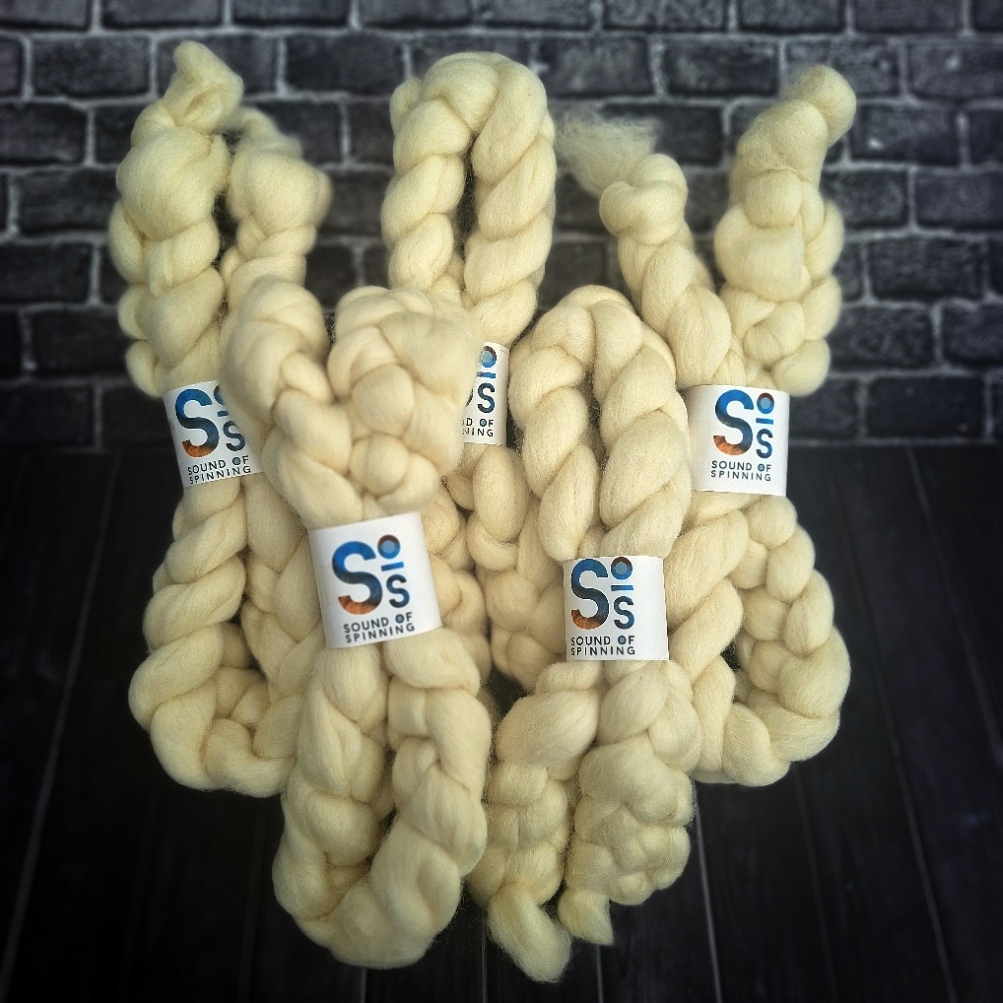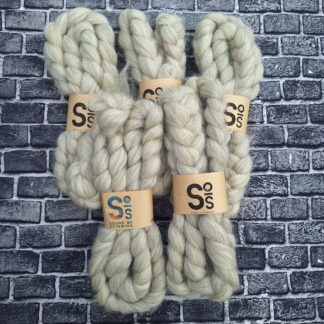Description
Contents: 100% Texel Wool
Micron: 30-36 mic
Staple Length: 200-300 mm
Weight: 100g
Crafting: Dyeing, Wet Felting, Needle Felting, Spinning, Weaving, Jumbo Knitting, Jumbo Crochet
Care: Hand Wash Only
Texel Sheep and Their Wool
Texel sheep are a meat-focused breed originally from Texel Island in the Netherlands. They are now one of the most common terminal sire breeds in Ireland, the UK, and across Europe, thanks to their rapid growth, excellent muscle development, and lean carcasses. While primarily valued for meat, Texel sheep also produce a dense, strong fleece that is underappreciated in the handcraft world, but increasingly recognised for its durability and practical applications.
Characteristics of Texel Sheep
Appearance:
– Stocky, muscular sheep with a broad frame, white face, and short legs.
– Bare head and legs, with a white, compact fleece.
Hardiness:
– Thrives in lowland conditions with good pasture.
– Well suited to intensive farming systems.
Texel Wool: Qualities and Uses
Texel wool is dense, springy, and moderately coarse, with very good resilience and wear resistance. It is not a fine wool but has qualities that make it useful in both blended yarns and industrial applications.
Fibre Length:
3–5 inches (7–13 cm) — medium staple.
Micron Count:
28–35 microns, putting it in the coarse wool category.
Texture:
– Springy, bulky, and resilient, with a medium crimp.
– May not be soft enough for next-to-skin garments, but very durable.
– Often overlooked by hand-spinners but quite functional and versatile.
Uses:
– Hardwearing garments: Socks, mittens, outerwear (especially in blends).
– Felting: Suitable for needle felting and structured wet felting projects.
– Upholstery & insulation: Used in battings, felt pads, and eco-insulation.
– Blending wool: Added to finer fibres to improve bounce and shape retention.
Texel Wool in Ireland and the UK
Widespread across Ireland and Britain as a commercial breed, especially for lamb production.
Texel fleece is often considered a by-product of meat farming, and is mostly sent to commercial wool boards or insulation manufacturers.
Some artisan mills and spinners are beginning to explore Texel crossbreed fleece for local yarns and robust hand-spinning.
Modern Uses and Demand
– Underutilised in the craft world, but Texel wool is gaining interest among sustainable producers looking for local, resilient fibres.
– It’s increasingly being valued for durability, spring, and shape retention, especially when blended.
– Perfect for functional, wear-resistant, and eco-conscious textiles.









